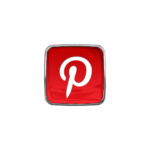
 If you’re looking to monetize your Pinterest account but don’t have a blog, you’re in luck! Affiliate marketing on Pinterest is a fantastic way to earn income by promoting products directly through your pins. In this article, we will guide you step-by-step on how to successfully use affiliate marketing on Pinterest without a blog.
If you’re looking to monetize your Pinterest account but don’t have a blog, you’re in luck! Affiliate marketing on Pinterest is a fantastic way to earn income by promoting products directly through your pins. In this article, we will guide you step-by-step on how to successfully use affiliate marketing on Pinterest without a blog.
Contents
- 1 Understanding Affiliate Marketing
- 2 Why Pinterest for Affiliate Marketing?
- 3 Setting Up Your Pinterest Account for Success
- 4 Finding Affiliate Programs to Join
- 5 Creating Eye-Catching Pins
- 6 Promoting Your Pins Effectively
- 7 Tracking Your Performance
- 8 Compliance with Affiliate Marketing Guidelines
- 9 Conclusion
Understanding Affiliate Marketing
Before diving into the specifics of Pinterest, let’s briefly define what affiliate marketing is. Affiliate marketing is a performance-based marketing strategy where you earn a commission for promoting someone else’s products or services. When someone clicks on your affiliate link and makes a purchase, you get paid!
Why Pinterest for Affiliate Marketing?
Pinterest is one of the most visual social media platforms, making it ideal for affiliate marketing. With over 450 million active users, it serves as a powerful search engine for product discovery. Here are a few reasons why Pinterest is perfect for affiliate marketing:
- High user intent: Users on Pinterest are often looking for inspiration and ideas, making them more likely to purchase.
- Visual appeal: Compelling visuals can attract attention and drive clicks.
- Longevity of pins: Unlike other social media platforms, pins can continue to drive traffic long after they’ve been posted.
Setting Up Your Pinterest Account for Success
To start using affiliate marketing on Pinterest, you’ll first need to set up your account correctly. Here’s how:
1. Create a Business Account
If you haven’t already, switch to a Pinterest Business account. This will give you access to analytics and promotional tools, enhancing your marketing efforts. You can sign up for free at the Pinterest Business website.
2. Optimize Your Profile
Make sure to fill out your profile completely. Use a clear profile picture, write a catchy bio that includes relevant keywords, and provide a link to your affiliate products or a landing page where users can learn more.
3. Enable Rich Pins
Rich Pins provide more context about an idea because they include extra information directly on the pin. This feature increases engagement and can lead to higher conversion rates.
Finding Affiliate Programs to Join
The next step is to find affiliate programs that align with your niche. Here’s how to do it:
1. Research Relevant Affiliate Programs
Look for affiliate programs that offer products that resonate with your Pinterest audience. Some popular affiliate networks include:
- Amazon Associates
- ShareASale
- Rakuten Marketing
- Commission Junction
2. Sign Up and Get Your Affiliate Links
Once you find programs that fit your niche, sign up and start generating your affiliate links. Keep a list of these links for easy access when creating your pins.
Creating Eye-Catching Pins
Now that you have your account set up and affiliate links ready, it’s time to create eye-catching pins. Here are some tips:
1. Use High-Quality Images
Images are the heart of Pinterest. Use high-resolution images that are visually appealing. You can create pins using design tools like Canva or Adobe Spark which offer templates specifically for Pinterest.
2. Write Compelling Descriptions
Your pin description should include relevant keywords and a clear call-to-action (CTA). For example, “Click here to discover the best kitchen gadgets that will change your cooking game!”
3. Incorporate Your Affiliate Link
When you create a pin, add your affiliate link directly in the pin’s URL field. Pinterest allows you to link directly to your affiliate product pages, making it easy for users to purchase.
Promoting Your Pins Effectively
Simply creating pins is not enough. You need to promote them effectively to drive traffic to your affiliate links. Here are some strategies:
1. Pin Regularly
Consistency is key on Pinterest. Aim to pin regularly and at optimal times when your audience is most active. You can use tools like Tailwind to schedule your pins for maximum exposure.
2. Join Group Boards
Joining group boards in your niche allows you to reach a wider audience. Make sure the group board allows affiliate links, and then share your pins there to increase visibility.
3. Utilize Pinterest SEO
Optimize your pins for Pinterest search by using relevant keywords in your pin titles and descriptions. This will make your pins more discoverable in search results.
Tracking Your Performance
To ensure your affiliate marketing efforts are paying off, it’s essential to track your performance. Use the following tools:
- Pinterest Analytics: This tool helps you understand which pins are performing best and how users are engaging with your content.
- UTM Parameters: Add UTM parameters to your affiliate links to track conversions and traffic sources in Google Analytics.
Compliance with Affiliate Marketing Guidelines
It is crucial to comply with Pinterest’s policies and the Federal Trade Commission (FTC) guidelines when using affiliate links. Always disclose that your pins contain affiliate links. You can do this by adding a simple note in your pin description, such as “#ad” or “#affiliate.”
Conclusion
Using affiliate marketing on Pinterest without a blog is entirely feasible and can be highly rewarding. By setting up your account properly, creating engaging content, and promoting your pins effectively, you can build a successful affiliate marketing strategy. Remember to track your performance and stay compliant with guidelines to maximize your earnings. Start pinning today, and watch your affiliate income grow!